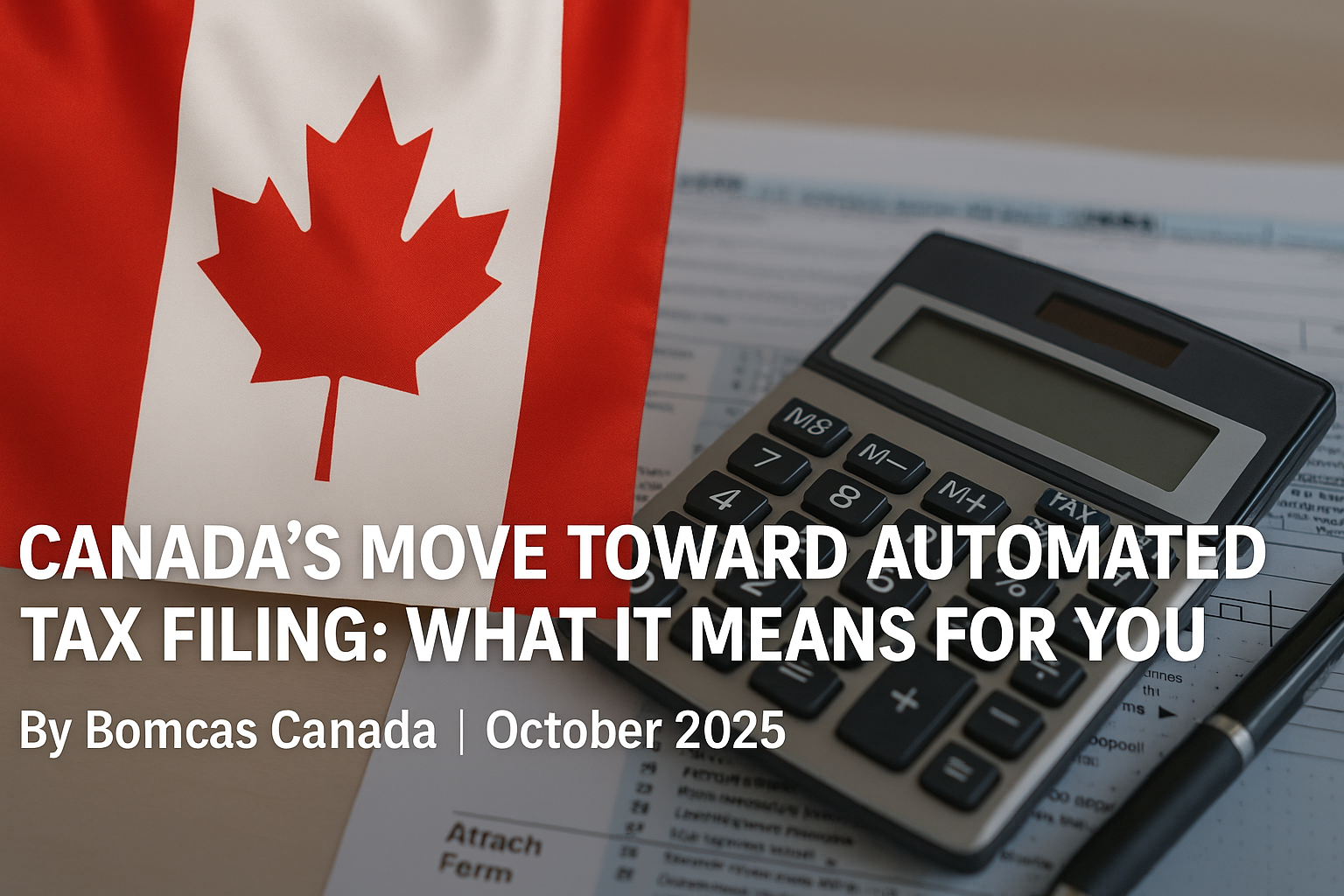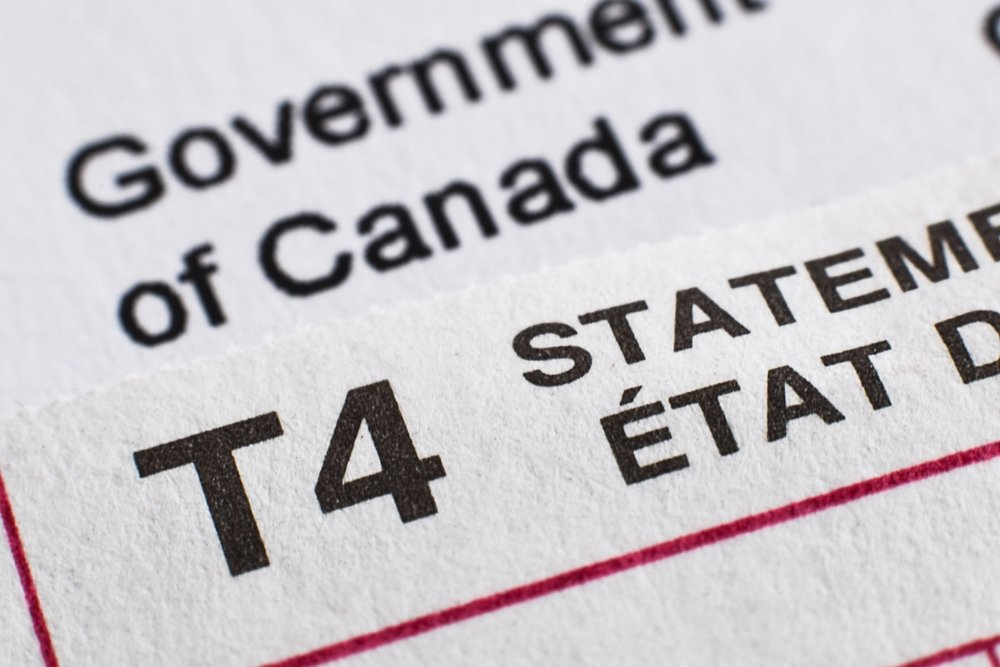The Canada Revenue Agency (CRA) is set to revolutionize tax filing for millions of Canadians with its automatic tax filing pilot program. This groundbreaking initiative aims to simplify the process of filing income taxes in Canada, particularly for lower-income individuals who may face challenges with traditional paper filing or online filing methods. The CRA’s automatic tax filing system represents a significant shift in how Canadians interact with their tax obligations, potentially increasing access to tax benefits and refunds for those who need them most.

As the CRA tax filing pilot expands to include 2 million Canadians, it marks a major step forward in the agency’s efforts to modernize and streamline tax services. This article delves into the details of the SimpleFile Canada program, exploring its benefits for low-income Canadians, the timeline for implementation, and how eligible individuals can participate. Additionally, it examines potential challenges and concerns surrounding this new approach to Canadian tax returns, providing readers with a comprehensive understanding of this transformative initiative in Canada’s tax landscape.
CRA’s Automatic Tax Filing Pilot: An Overview
The Canada Revenue Agency (CRA) has launched a groundbreaking initiative called the Automatic Tax Filing Pilot, which aims to simplify the tax filing process for eligible Canadians. This national pilot project, included in the 2024 federal budget, represents a significant step towards modernizing Canada’s tax system and ensuring more Canadians can access the benefits they are entitled to.
What is the Automatic Tax Filing Pilot?
The Automatic Tax Filing Pilot is a voluntary program that allows the CRA to automatically file tax returns for eligible individuals who have not filed a return in the previous tax year. This service has been expanded to include thousands more Canadians, with over 500,000 eligible individuals invited in July to file their 2023 tax returns using the CRA’s SimpleFile services. These services offer options to file by phone, online, or by mail, making the process more accessible and convenient.
Who is eligible?
To be eligible for the Automatic Tax Filing Pilot, individuals must meet specific criteria:
- Have filed a tax return in the past
- Have a simple tax situation (e.g., no self-employment income, rental income, or other complex tax situations)
- Have income solely from employment, pensions, or government benefits
- Have no outstanding tax debt or payments owed to the CRA
- Have provided the CRA with up-to-date contact information
The pilot program is particularly designed to help low-income Canadians who have never filed a tax return or who have a gap in their filing history. The CRA has stated that invitations for the pilot project had already been opened up to more than 1.5 million Canadians in early 2024 who have “a lower income or a fixed income and who are in a simple tax situation that remains unchanged from year to year.”
How does it work?
For eligible individuals, the CRA will automatically file their tax return using the information it has on file, such as T4 slips and other information returns. The process is designed to be straightforward and efficient:
- Individuals using the phone or digital service will be asked a series of simple questions and will need to confirm their personal information.
- Tax returns can be filed in as little as 10 minutes, according to the CRA.
- Both phone and digital services are available daily from 6 a.m. to 3 a.m. Eastern time, seven days a week.
- After the return has been processed, a notice of assessment will be sent either via mail or to the person’s CRA account.
- If no PIN is created during the process, the notice of assessment will be sent through the aforementioned channels.
It’s important to note that individuals who are eligible for the Automatic Tax Filing Pilot can choose to opt-out of the program and file their own tax return if they prefer. This flexibility ensures that Canadians have control over their tax filing process while benefiting from the simplified system if they choose to use it.
Expansion to 2 Million Canadians
The Canada Revenue Agency (CRA) has taken significant steps to broaden the scope of its automatic tax filing pilot program, aiming to include up to 2 million Canadians. This expansion represents a substantial increase from the initial rollout and has the potential to have a considerable impact on low-income and fixed-income individuals across the country.
Initial Rollout
The CRA’s automatic tax filing initiative began with the SimpleFile program, which has been in place since 2018. This program initially focused on providing a phone-based tax filing system for eligible Canadians. The agency sent out written invitations to taxpayers, encouraging them to call a dedicated phone line and answer a series of questions to file their tax returns. This approach aimed to simplify the process for individuals with straightforward tax situations.
Recent Summer Invites
In a significant move to expand the program, the CRA announced in July that more than 500,000 eligible Canadians were invited to file their 2023 tax returns using the agency’s SimpleFile services. This expansion included new options for filing, allowing individuals to complete their returns by phone, online, or by mail. The addition of digital and paper options to the SimpleFile system marks a crucial step in making tax filing more accessible to a broader range of Canadians.
With these summer invitations, the automatic tax filing service has now been offered to at least two million Canadians in 2024. The CRA stated that invitations for the pilot project had already been extended to more than 1.5 million Canadians earlier in the year. These individuals typically have lower incomes or fixed incomes and are in simple tax situations that remain relatively unchanged from year to year.
Projected Impact
The expansion of the automatic tax filing program has the potential to have a significant impact on vulnerable Canadians who often miss out on benefits to which they are entitled. According to a report by the Parliamentary Budget Officer (PBO), implementing an automatic tax filing system could result in Canadians receiving more than a billion dollars each year in currently unclaimed benefits due to not filing their tax returns.
However, experts have pointed out that the current system still requires taxpayers to initiate the process, which may limit its effectiveness. It is emphasized by professionals in the accounting industry that requiring individuals to take the first step could be a “fatal flaw” in reaching those who are intimidated by or unfamiliar with the tax system.
The CRA has acknowledged that further improvements are needed and plans to hold consultations to find ways to “further automate” the tax filing system. The agency has stated its commitment to charting a path forward beyond 2025 that respects the needs of non-filing, lower-income Canadians, ensuring more individuals have access to the benefits and credits designed to support them.
As the CRA continues to refine and expand its automatic tax filing services, the goal remains to simplify the process for millions of Canadians, particularly those in lower-income brackets, and to ensure they receive the benefits they are entitled to. BOMCAS Canada stands ready to assist individuals in maximizing their tax returns within this evolving system.
SimpleFile Services Explained
SimpleFile is a comprehensive service offered by the Canada Revenue Agency (CRA) that allows individuals and businesses to file their taxes through multiple channels. This innovative system has been designed to accommodate various preferences and needs, making tax filing more accessible and convenient for Canadians.
Phone Filing Option
The phone filing option provided by SimpleFile offers a convenient solution for those who prefer to speak with a tax professional directly. This service allows users to have their tax returns filed over the phone, making it particularly useful for individuals who may not be comfortable with online platforms or prefer verbal communication. The process is designed to be user-friendly, with tax professionals guiding callers through a series of questions to complete their returns efficiently.
Online Filing Process
SimpleFile’s online filing process has been developed to be simple and straightforward, catering to those who are comfortable with digital platforms. The system provides step-by-step guidance, helping users navigate through the tax filing process with ease. Key features of the online filing option include:
- User-friendly interface for easy navigation
- Ability to upload tax documents directly to the platform
- Electronic submission of completed tax returns
- Step-by-step instructions to ensure accuracy and completeness
This digital approach not only streamlines the filing process but also reduces the likelihood of errors that can occur with manual entries.
Paper Filing Alternative
For those who prefer traditional methods or may not have access to digital resources, SimpleFile offers a paper filing alternative. This option allows users to print and mail in their completed tax forms. While this method may take longer than its digital counterparts, it ensures that all Canadians have access to tax filing services, regardless of their technological capabilities or preferences.
The SimpleFile system’s multi-channel approach demonstrates the CRA’s commitment to making tax filing accessible to all Canadians. By offering phone, online, and paper filing options, the agency has created a flexible system that can accommodate various needs and preferences. This inclusivity is crucial in ensuring that all eligible individuals can fulfill their tax obligations and access the benefits they are entitled to receive.
BOMCAS Canada stands ready to assist Canadians in navigating these SimpleFile services, helping them to maximize their tax returns through whichever filing method they choose. With expert guidance and support, taxpayers can confidently utilize the SimpleFile system to meet their tax obligations efficiently and effectively.
Benefits for Low-Income Canadians
The Canada Revenue Agency (CRA) has implemented several initiatives to assist low-income Canadians in accessing the benefits and credits they are entitled to. These efforts aim to address the challenges faced by non-filers, simplify the tax process, and increase the number of eligible Canadians claiming the benefits they deserve.
Addressing non-filers
One of the key challenges the CRA faces is reaching non-filers – individuals who are eligible for benefits but do not file tax returns. To tackle this issue, the agency has introduced outreach programs to connect with these individuals and assist them in filing their returns. The CRA works closely with community organizations and service providers to identify and support non-filers in completing their tax returns and accessing the benefits they are entitled to, such as the Canada Child Benefit, the Goods and Services Tax/Harmonized Sales Tax (GST/HST) Credit, and the Canada Workers Benefit.
Simplifying the tax process
The CRA has made significant efforts to simplify the tax filing process for low-income Canadians. These initiatives include:
- Providing easy-to-understand guides
- Offering free tax preparation clinics
- Expanding the use of pre-filled tax returns
- Introducing the File My Return service
The File My Return service allows eligible individuals to file their taxes through an automated phone service or online, without the need for complex forms or paperwork. This service has been particularly beneficial for those who may have difficulty accessing or using digital tax filing tools.
Additionally, the CRA has implemented the Community Volunteer Income Tax Program (CVITP), which provides free tax preparation services to eligible individuals, including low-income Canadians, seniors, and persons with disabilities. Through this program, trained volunteers assist in filing tax returns, ensuring that individuals receive the benefits and credits they are entitled to.
Potential for increased benefit claims
These initiatives have the potential to increase the number of low-income Canadians claiming the benefits they are entitled to. By addressing barriers to tax filing and simplifying the process, the CRA aims to ensure that all eligible individuals can access the support they need. The agency has implemented measures to increase the number of eligible Canadians claiming the benefits they are entitled to, including:
- Proactive outreach to individuals who may be eligible for benefits but have not claimed them
- Partnerships with community organizations to raise awareness and provide assistance
- Providing clear and accessible information on available benefits and credits
- Streamlining the application and eligibility requirements
It is important to note that these efforts aim to address the disproportionate impact of tax compliance costs on lower-income Canadians. Studies have shown that Canada’s tax compliance costs fall disproportionately on lower-income individuals, who pay the highest share of their income to comply with the tax system. By simplifying the process and providing support, the CRA aims to reduce this burden and ensure that low-income Canadians can access the benefits they deserve.
BOMCAS Canada stands ready to assist individuals in maximizing their tax returns within this evolving system, helping low-income Canadians navigate the simplified tax filing process and access the benefits they are entitled to receive.
Timeline of the Pilot Program
2024 Federal Budget Announcement
The Canada Revenue Agency’s (CRA) automatic tax filing pilot program took its first steps with the 2024 federal budget announcement. This budget included funding for a pilot program to expand access to SimpleFile, a free online tax filing service. The initiative aimed to help hundreds of thousands of low- and fixed-income Canadians access benefits that are paid only to people who file tax returns.
March Expansion of SimpleFile by Phone
In March, the CRA made significant strides by expanding the SimpleFile service. This expansion allowed taxpayers to file their taxes by phone, in addition to the existing online filing option. The SimpleFile by Phone system, which has been in place since 2018, involves CRA agents asking simple questions over the phone to provide a refund estimate by the end of the call. This expansion doubled the number of invitations from the previous year, with more than 1.5 million individuals with lower or fixed incomes and simple tax situations being invited to use SimpleFile by Phone in early 2024.
July Invitation Phase
The pilot program entered a crucial phase in July when the CRA expanded its SimpleFile services to include phone, digital, and paper options. This expansion invited more than 500,000 eligible lower-income individuals to file their 2023 tax returns and potentially gain access to important benefit and credit payments. The agency announced that these services would be available for a limited time to assist individuals in automatically filing their 2023 tax returns.
Key features of the July invitation phase include:
- Availability of SimpleFile services 21 hours a day, from 6 a.m. to 3 a.m., Eastern time, 7 days a week.
- Option to complete tax returns in as little as 10 minutes from the comfort of one’s home.
- Invitation-only service, targeting eligible individuals to file their tax returns.
With these summer invites piloting the digital and paper options, the automatic tax filing service has been offered to at least two million Canadians so far this year. The CRA has reported that more than 90% of the invitees have filed their tax returns using a variety of filing methods offered by the agency.
Looking ahead, SimpleFile is a key Budget 2024 commitment, and the CRA is on track to further increase the number of invitations to two million for the 2025 tax season. This phased approach allows the CRA to efficiently learn about the effectiveness of the program, identify areas for improvement, and ensure it meets the needs of taxpayers who want to use it.
BOMCAS Canada stands ready to assist eligible individuals in maximizing their tax returns through this evolving system, helping them navigate the SimpleFile services and access the benefits they are entitled to receive.
How to Participate in the Pilot
Receiving an invitation
Participation in the Canada Revenue Agency’s (CRA) automatic tax filing pilot program begins with receiving an invitation. The CRA has extended invitations to over 500,000 eligible Canadians in July to file their 2023 tax returns using the agency’s SimpleFile services. This national pilot program, included in the 2024 federal budget, aims to assist low-income Canadians who have never filed a tax return or who have a gap in their filing history. With the summer invitations that pilot the digital and paper options, the automatic tax filing service has been offered to at least two million Canadians so far this year.
Choosing your filing method
Once an individual receives an invitation, they have the option to choose their preferred filing method. The CRA offers three convenient ways to file tax returns:
- By phone
- Online
- By mail
Each method has been designed to accommodate different preferences and technological comfort levels. The phone and digital services are available daily from 6 a.m. to 3 a.m. Eastern time, seven days a week, providing ample opportunity for participants to file at their convenience.
Step-by-step guide
The CRA has provided a straightforward process for participants to follow:
- Receive and review the invitation from the CRA.
- Select the preferred filing method (phone, online, or mail).
- For phone or digital service users:
- Answer a series of simple questions.
- Confirm personal information.
- Complete the filing process, which can take as little as 10 minutes.
- If no PIN is created during the process, wait for the notice of assessment to be sent either via mail or to the individual’s CRA account after the return has been processed.
The SimpleFile by Phone system, which has been in place since 2018, involves CRA agents asking simple questions over the phone to provide a refund estimate by the end of the call. This system has been expanded to double the number of invitations from the previous year.
BOMCAS Canada stands ready to assist eligible individuals in maximizing their tax returns through this pilot program. By offering support and guidance throughout the process, BOMCAS Canada helps ensure that participants can take full advantage of the simplified filing methods and access all the benefits they are entitled to receive.
Potential Challenges and Concerns
While the Canada Revenue Agency’s (CRA) automatic tax filing pilot program offers significant benefits, it also faces several potential challenges and concerns that need to be addressed to ensure its success and widespread adoption.
Data security measures
Data security is a top priority for any tax filing service, as taxpayers entrust sensitive financial information to these platforms. The CRA must implement robust security measures to protect against data breaches and unauthorized access. Essential measures include encryption, two-factor authentication, and secure data storage to ensure the confidentiality and integrity of taxpayer data. As the pilot program expands to include more Canadians, the CRA will need to continuously update and strengthen its security protocols to safeguard the increasing volume of sensitive information.
Accuracy of pre-filled information
The accuracy of pre-filled information is crucial, as taxpayers rely on the service to provide correct and up-to-date details about their income, deductions, and credits. The CRA must establish robust quality control processes to verify the accuracy of pre-filled information and catch any errors or discrepancies. This challenge is particularly significant given the potential for a pre-populated return to function as a nudge toward accepting the unmodified pre-populated liability, which could change the distribution of taxes paid. To address this issue, the CRA needs to ensure that these pre-populated liabilities align closely with “true” liabilities under the Internal Revenue Code to avoid undermining various equity and efficiency policy aims.
Support for complex tax situations
Taxpayers with complex tax situations, such as self-employment, investment income, or multiple sources of income, may require more specialized support and guidance from the tax filing service. The CRA should offer comprehensive support options, including access to tax professionals, to help taxpayers navigate complex tax situations and ensure they are filing their returns correctly. This support becomes even more critical as the pilot program expands to include a broader range of taxpayers with diverse financial circumstances.
Additionally, the implementation of pre-populated returns faces logistical challenges. Either providers of information returns – such as employers and financial institutions – would need to submit information returns earlier than they currently do, or the deadline for individual returns would have to be delayed. The CRA would need sufficient resources and time to process information returns and generate pre-populated tax returns, while taxpayers would need time to review the tax return, make any necessary changes, and submit it back to the CRA.
Another potential issue is correctly inputting a taxpayer’s filing status, which can impact tax liability or a refund. While this could be reviewed and corrected by taxpayers before filing, it adds another layer of complexity to the process.
Organizational and operational challenges also need to be considered for this new project. As Ayushi Roy, deputy director at New America, points out, “Any technology that you build is only as good as the organizational design, bureaucracy and communication of that organization.” The CRA must ensure that its internal structures and processes are optimized to support the implementation and ongoing management of the automatic tax filing system.
BOMCAS Canada stands ready to assist taxpayers in navigating these challenges and maximizing their tax returns within this evolving system. By offering expert guidance and support, BOMCAS Canada can help individuals address complex tax situations and ensure they take full advantage of the benefits offered by the automatic tax filing pilot program.
Conclusion
The CRA’s automatic tax filing pilot program marks a significant step to simplify the tax process for millions of Canadians. By offering multiple filing options and targeting low-income individuals, this initiative has the potential to revolutionize tax compliance and benefit distribution. The expansion to include 2 million Canadians demonstrates the government’s commitment to making tax filing more accessible and ensuring eligible individuals receive the benefits they’re entitled to.
As the program moves forward, addressing challenges such as data security and support for complex tax situations will be crucial to its success. BOMCAS Canada Accountants help clients across Canada each year maximize their tax returns better than an online program. With continued refinement and expansion, this pilot program could pave the way for a more efficient and inclusive tax system, ultimately benefiting both individual Canadians and the nation as a whole.










 View Our Location
View Our Location





 181 Meadowview Bay, Sherwood Park, AB T8H 1P7, Canada (Online Clients Only)
181 Meadowview Bay, Sherwood Park, AB T8H 1P7, Canada (Online Clients Only)